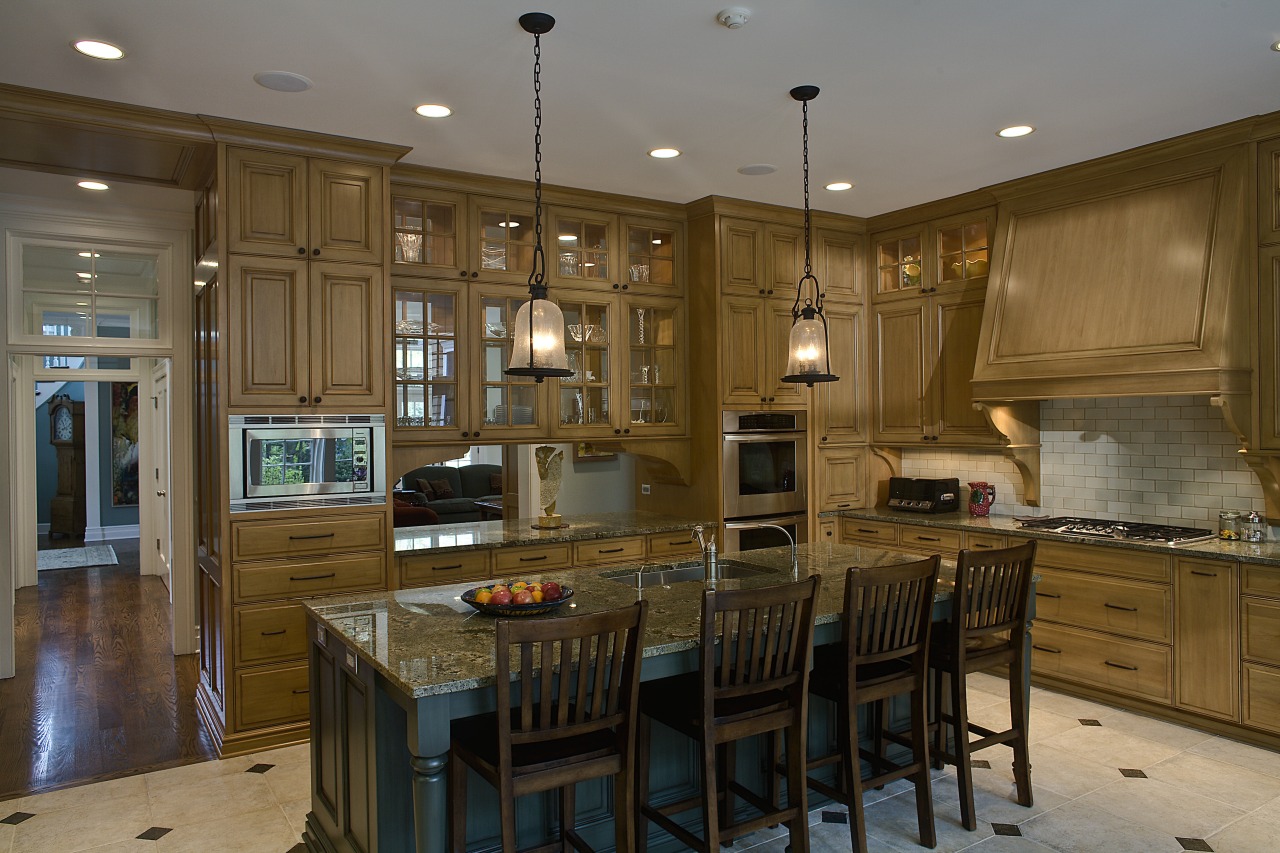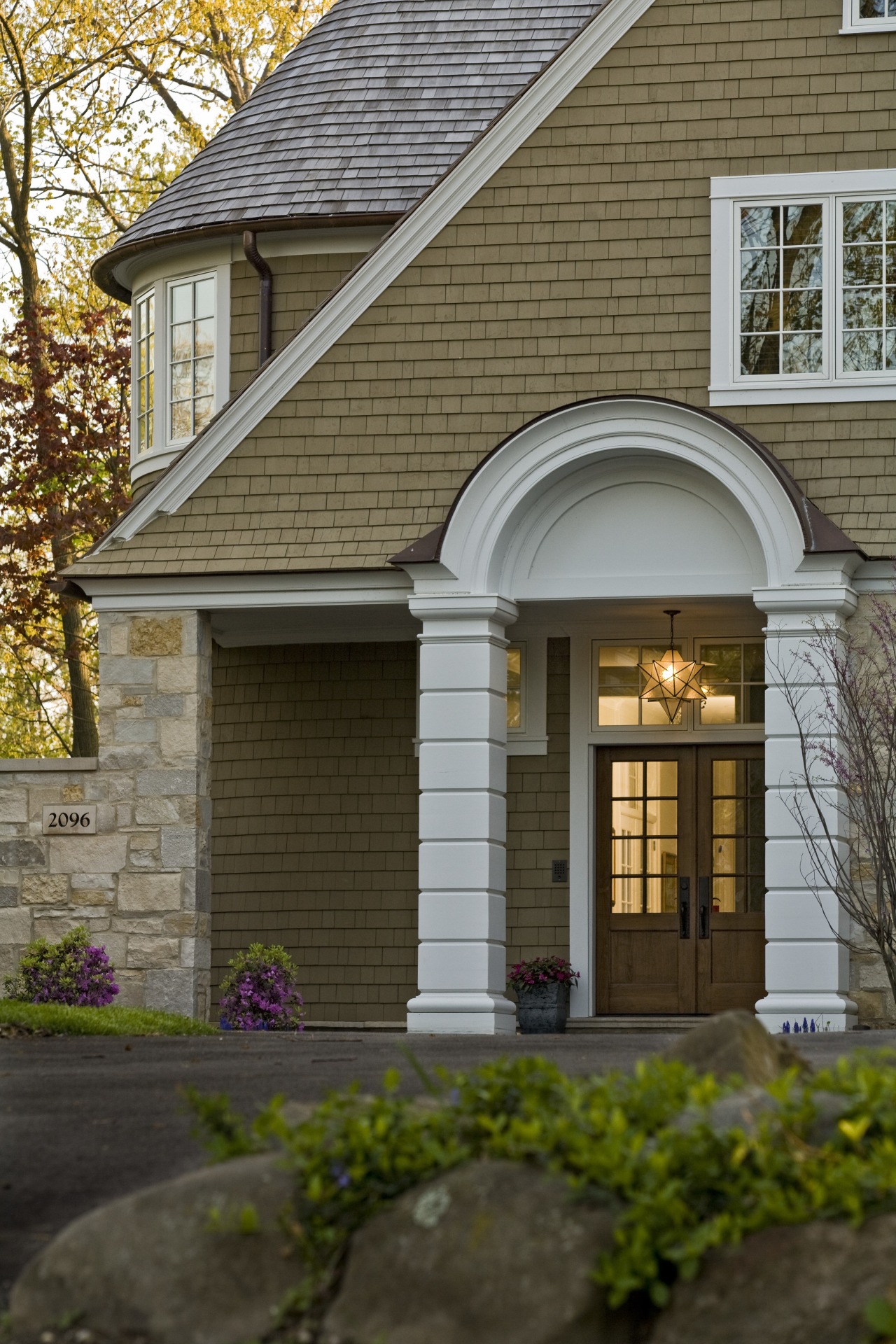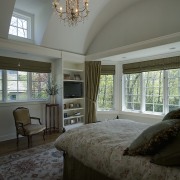Once upon a time¦
With its fairy-tale turret and asymmetrical gabled roof, this new shingle house recalls the character of the English Arts and Crafts movement

American Shingle-style houses built around the turn of the last century have plenty of visual appeal, but they are not always well suited to modern lifestyles.
The owners of this new house, who faced this situation, found the ideal solution just a few houses down the road. An attractive building site presented an ideal opportunity to plan a new home that would respond to the needs of their growing family, while still providing all the character and charm of a traditional American Shingle-style house.
The couple commissioned Chicago architects Stuart Cohen and Julie Hacker, who say the architecture also draws on the English Arts and Crafts movement notably the work of architects Edwin Lutyens and Charles Voysey.
"With its varying roof forms, turrets and stone walls, this is a highly picturesque architectural style," says Cohen. "It also provides a certain amount of design flexibility. The asymmetrical compositions can be designed so the classical elements play off each other in an inventive way."
Cohen says the entrance, for example, reflects Lutyens' design influence.
"It's a classical entry tucked into the front of the house, slightly off center of the gable it forms a key part of the asymmetrical facade."
Hacker says the traditional references allowed the designers to create different elements that interweave to make a strong architectural statement.
"The stone wall at the front of the house peels away from the building to provide shelter for a courtyard. And the curved volume that accommodates the stairwell peels away from the sloping roof of the gable. The interplay between all these elements helps to animate the front of the house."

Cohen says rotating the position of the house so it is at a slight angle to the street means two sides are visible. This creates a more open, welcoming feel.
But while the exterior typifies original American Shingle and English Arts and Crafts houses, the interior reflects a more modern approach to space planning.
"We have taken traditional elements and transformed them to provide a much more continuous, open space," says Hacker. "Wide openings between rooms allow for multiple connections. They also form a visual understanding of the larger space. Aligning doors and openings means the views can be glimpsed from many areas of the house. For example, there is an axis that runs from the living room through the dining room and screen porch to the outside."
Cohen says the contemporary design approach to space planning is derived from the 20th-century Modernist movement. For this house, the ideas have been put into a traditional context.
The repetition of key horizontal elements is also a Modernist reference. Transom windows inside the house are positioned above the interior doors at the same height as the horizontal band that runs through all the first-floor windows.
"Glazing the area between the top of the door and the ceiling effectively opens up the interior you don't feel that the doorway stops and divides the space," says Cohen. "Repeating the horizontal banding emphasizes the connection between one space and another, rather than the separation."
The horizontal line is also evident in the kitchen, where it is formed by the top row of glass cabinets. The two-sided glass cabinets and pass-through were designed to enhance the visual connection between the kitchen and family living area.
Further continuity is provided by the alder cabinetry, which features in several areas of the house, including the living room. The door panels and the crown and base assembly are replicated in each space. Similarly, the white moldings and trim are standardized throughout the house.

"Alder wood was chosen for its color and interesting grain," says Hacker. "Repeating the cabinetry makes it seem an integral part of the house, rather than a stand-alone element."
For this reason also, the kitchen cabinets extend to the ceiling to create a uniform, built-in appearance.
"The cabinetry provides a coherent, simple look, even though the individual elements are quite complex," says Hacker.
Alder cabinetry and paneling also features in the master bathroom, which has twin vanities, and a tub set in an alcove.
In the master bedroom, the gabled roof allows for the creation of a dramatic vaulted ceiling.
"The verticality brings a very serene ambiance to the room," says Hacker. "The effect is enhanced by the windows that provide a view of the tree canopy."
Credit list
Interior designer
Mechanical engineer
Kitchen manufacturer
Roofing
Recessed lighting
Countertops
Sink
Microwave
Basins
Structural engineer
Builder
Siding
Kitchen and bathroom cabinets
Backsplash
Faucets
Ventilation
Water dispenser
Bath
Faucets in master bathroom
Accessories
Story by: Colleen Hawkes
Home kitchen bathroom commercial design
Connected to the ocean
Simplified seclusion
At one with the Amazon











